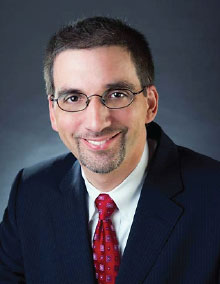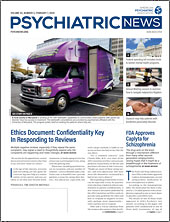Deaths tied to stimulants are on the rise, signaling a growing crisis that may catch the country off guard, said presenters at a session at the American Academy of Addiction Psychiatry’s 30th Annual Meeting and Scientific Sessions in December.
“We have a tsunami coming of stimulant abuse, and with such a focus on opioids we may be distracted,” said Thomas R. Kosten, M.D., the JH Waggoner Chair and Professor of Psychiatry, Pharmacology, Immunology, Pathology, and Neuroscience at Baylor College of Medicine in the session’s opening comments.
Timothy E. Wilens, M.D., chief of the Division of Child and Adolescent Psychiatry and director of the Center for Addiction Medicine at Massachusetts General Hospital and Harvard Medical School, presented an update on trends of misuse among youth. He said that one in six high school students has taken prescription stimulants for nonmedical reasons, whether he or she had been prescribed those medications or had obtained them illicitly. Furthermore, 43% of adolescents who take prescription stimulants for medical purposes have also used the medications for nonmedical reasons. The most common reason for doing so is to help them concentrate or stay awake.
“But does it really help them concentrate? No, it’s placebo effect in at least half of them. If I said I put a dose of methamphetamine in your drink this morning, you would be more awake because you expect to be,” Wilens told the audience.
Wilens called attention to the alarming trend of college students taking prescription stimulants intranasally. He cited studies suggesting that although 55% of those who misuse prescription stimulants take them orally, 40% snort them, likely because it produces stronger euphoria.
Misusing prescription stimulants during adolescence can have repercussions years later, including a higher risk of substance use disorders and lower educational attainment than those who do not misuse the medications, he noted.
Although there are currently no FDA-approved pharmacologic treatments for stimulant use disorder, psychosocial interventions may work, said John Mariani, M.D., an associate professor of psychiatry at Columbia University and the medical director of Columbia’s outpatient substance use disorders clinic. These treatments include, among others, the following:
•
Contingency management, which offers rewards to patients such as cash or employment to reinforce positive behaviors such as drug abstinence, clinic attendance, or medication adherence.
•
Cognitive-behavioral therapy (CBT).
•
Motivational interviewing, which focuses on helping patients to develop internal motivation to change behavior. 12-step programs.
Mariani said that contingency management “works well but those with financial incentives are very rarely implemented in treatment programs. The rewards need to be meaningful [to patients].”
He also addressed 12-step programs, noting that there is limited evidence such programs help patients with stimulant use disorders. “How people feel about [these programs] predicts how well they will do. It works for fewer people than CBT. However, those for whom the programs work have greater days of abstinence [than they would without participating].” Mariani noted that some psychosocial therapies are more effective at treating particular challenges faced by patients with stimulant use disorder. “For ambivalence to treatment, focus on motivational interviewing. For poor coping skills, frequent relapses, or managing cravings, try CBT.”
Frances R. Levin, M.D., the Kennedy-Leavy Professor of Psychiatry at Columbia University Irving Medical Center and chief of the Division on Substance Use Disorders at New York State Psychiatric Institute at Columbia, rounded out the session with a discussion of potential pharmacologic treatments that are being investigated, and emphasized the need for more dedicated research.
“We often get within two feet of the finish line and give up, and we need to finish these clinical trials,” Levin said.
That said, there are several promising candidates, according to Levin. These include dextroamphetamine sustained release for stimulant use disorder, modafinil for cocaine use disorder, bupropion for methamphetamine dependence, topiramate for cocaine use disorder with comorbid alcohol use disorder, and oral naltrexone for amphetamine use disorder.
“We’ve come a long way and I don’t think we have to have a sense of nihilism that there are no medications with potential,” Levin said. ■

